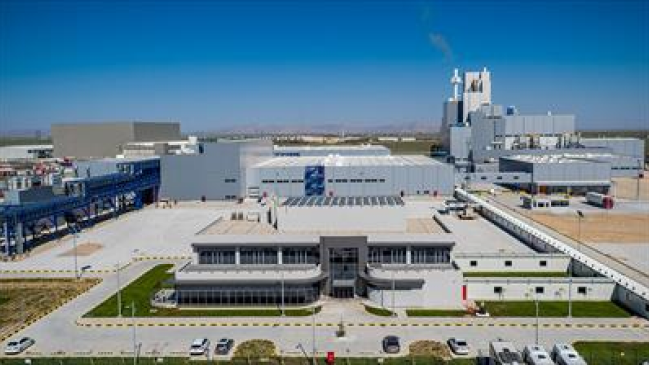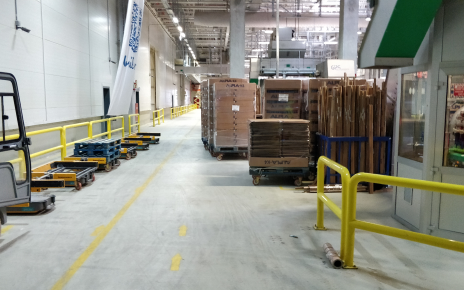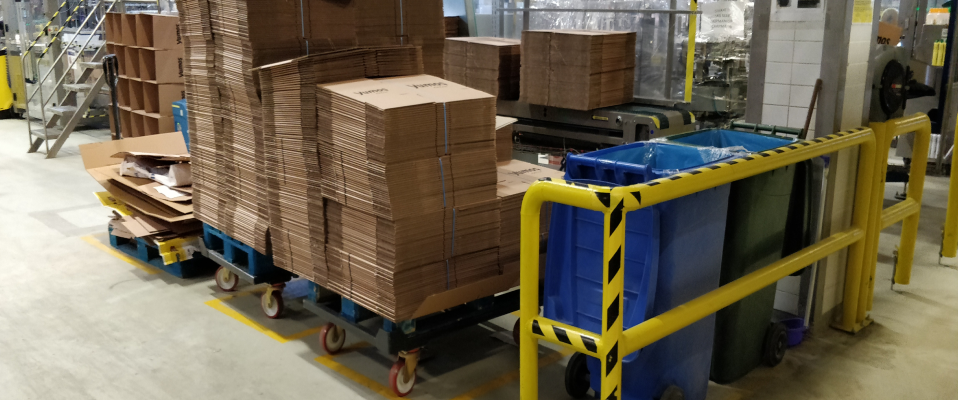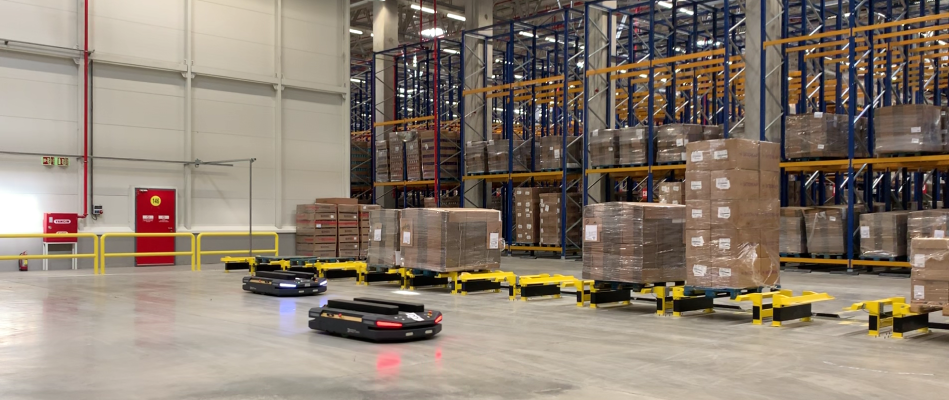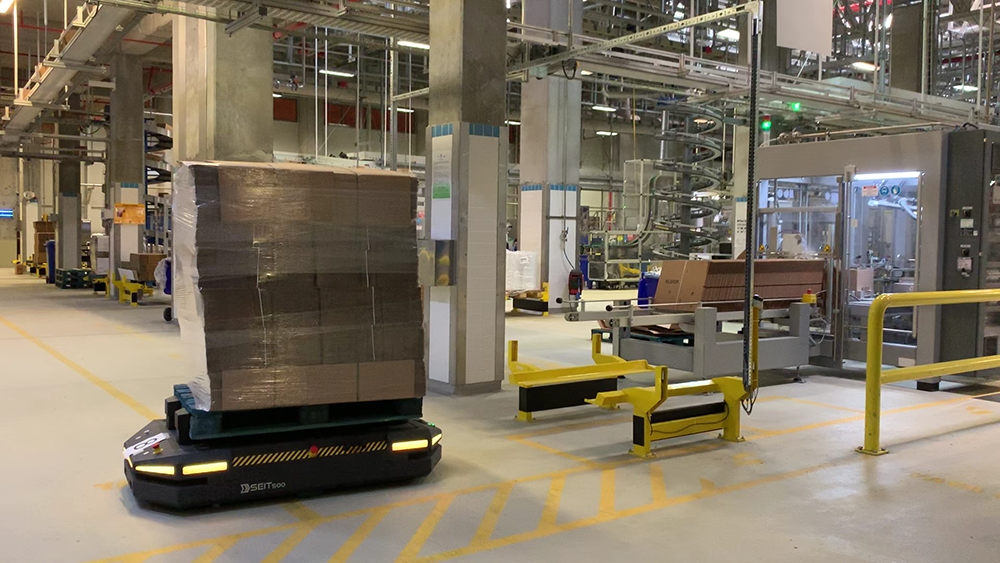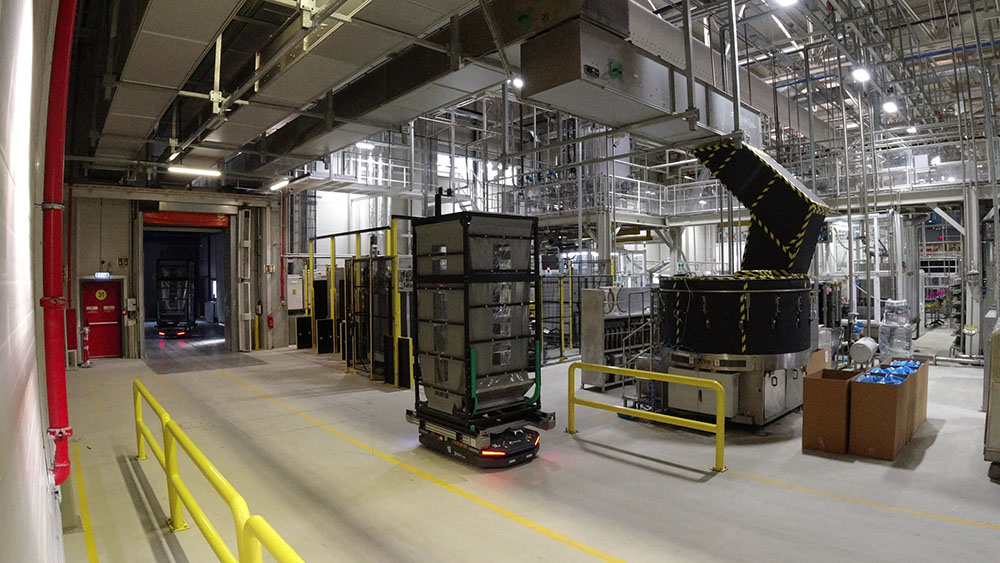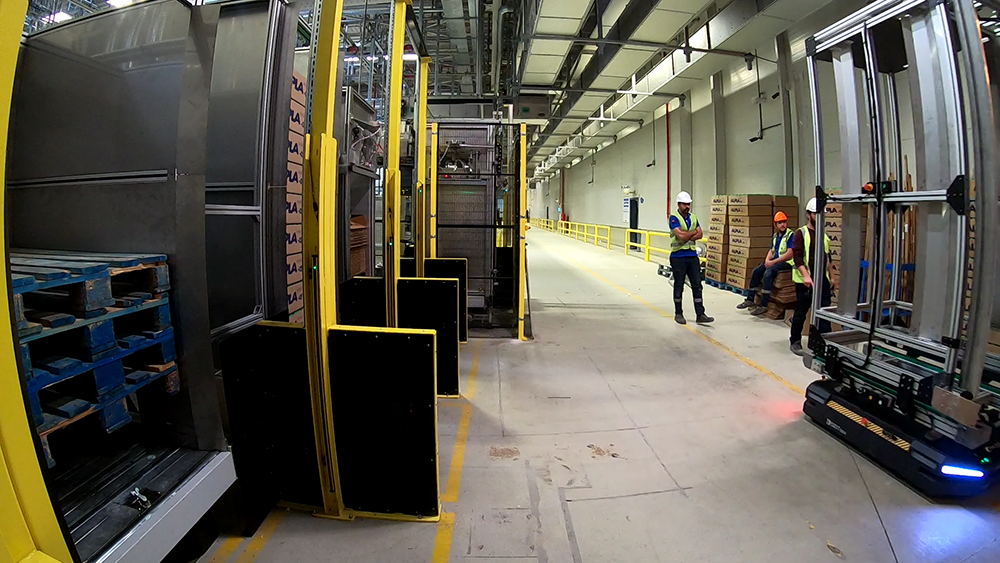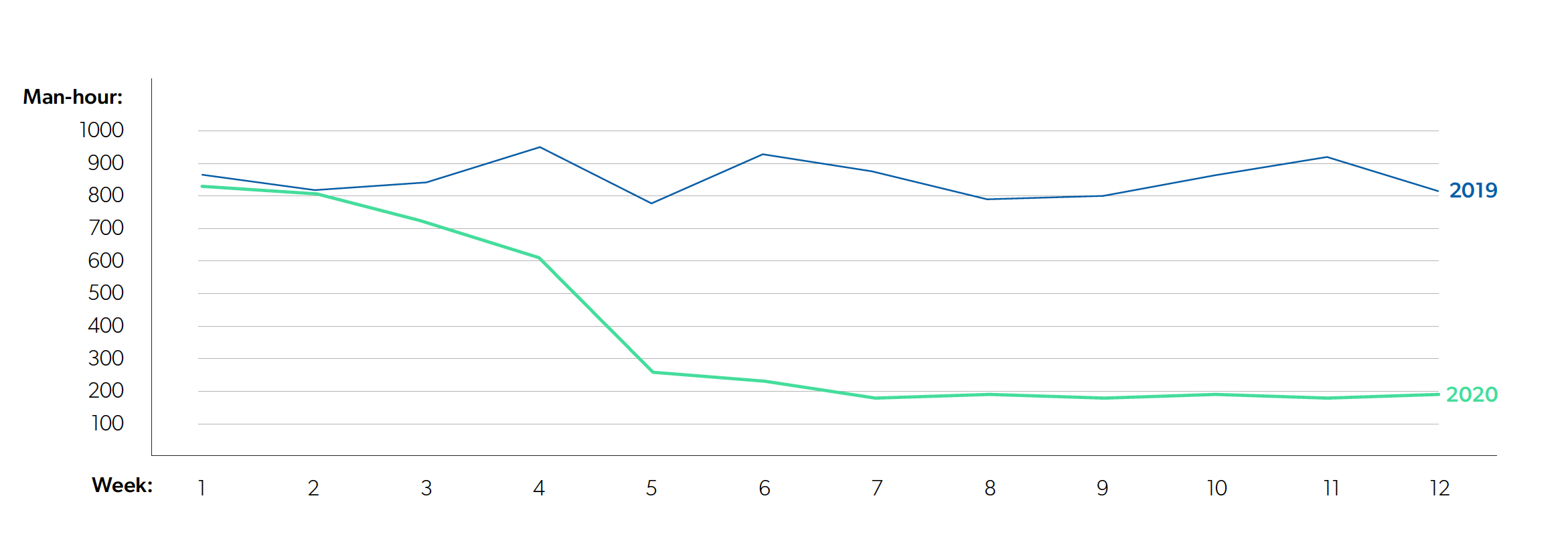The challenge here was to deliver raw material from the warehouse area to the production area, deliver pallets, and transport waste materials. The Unilever Konya HPC Factory utilized long milk runs that led to safety issues, time loss, labor costs, mistakes, and more. With four different material types needing to be transported twenty-four hours nonstop for over 100 distribution points, it was a complex issue requiring a sophisticated solution.
The first challenge was the inefficiency of the milk runs travelling through the production area. In this case, the milk run method took up too much space and led to many problems. It posed safety concerns to the workers on the floor and caused a crowded workspace with limited clearance of machines and equipment, narrow paths, and several turns. A high level of dependence on manual labor posed yet another problem. With a high driving workload of milk run drivers, the labor cost was becoming unsustainable.
